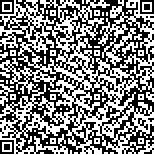| 摘要: |
| 移动定位大数据包括手机信令数
据、移动互联网LBS数据等类型,是表示个
体活动时空特征的轨迹数据。在移动定位
大数据中依据轨迹点的时空特征规律能识
别出个体活动的居住、工作、游憩等特征
点,计算上述活动的空间分布特征,进而获
得居住、工作、游憩等功能之间联系的流向
和流量特征,获得传统数据无法反映的城
市功能空间分布以及城市功能联系的时空
特征。由此,移动定位大数据支持建成环境
规划设计有密度出发和联系出发两种应用途
径。联系出发的途径能支持区域城市关联、
职住空间关系、城市中心体系、设施服务水
平等方向;密度出发的应用途径能支持城
市人口规模、街道活力分析等方向。移动定
位大数据测算居民活动特征还只是一种推
测,在应用方法上要避免“黑箱”方式,对移
动定位大数据测算结果一定要结合传统数
据进行校核,提高可靠性。 |
| 关键词: 移动定位大数据 个体活动 城
市功能 规划设计 |
| DOI:10.13791/j.cnki.hsfwest.20190104 |
| 分类号: |
| 基金项目:国家自然科学基金面上项目(51878457) |
|
| Approaches and Methods for Mobile Positioning Big Data to Support Built Environment Planningand Design |
|
NIU Xinyi,LI Meng
|
| Abstract: |
| With the development of information and communication technologies, especially
mobile communications and mobile Internet, portable mobile devices have generated a variety
of mobile positioning big data. The mobile positioning big data includes mobile phone signaling
data, mobile Internet LBS data and other similar data, which is a kind of trajectory data
indicating the spatial and temporal characteristics of individual activities. From the temporal
and spatial characteristics of the trajectory points based on the mobile positioning big data, the
feature points such as residence, work, and recreation of individual activities can be identified,
so that the spatial distribution characteristics of these above activities can be calculated. In
addition, the flow direction and the flow volume characteristics between the functions of
residence, work, recreation can be obtained, which can present the spatial distribution of urban
functions and the spatial and temporal characteristics of urban functional links that cannot
be reflected by traditional data. This is the application basis of mobile positioning big data in
planning and design of built environment. Mobile positioning big data can also be used for
regional urban agglomeration and urban system analysis. For example, flow of people between
cities can be measured using mobile positioning big data. In this application scenario, mobile
positioning big data is equivalent to passenger data of full-transportation mode between cities
which can support regional planning.
Therefore, there are two application approaches for mobile positioning big data to support
built environment planning and design, density-based and link-based approaches. The linkbased
application is to focus on the link between specific activities such as “residence”, “work”
and “recreation” of the same user. The link-based approaches can support regional urban
association, jobs-housing spatial relationship, urban public center system, urban facilities
service level, etc. The density-based approach is to focus on the density spatial distribution
characteristics of specific functions such as residence, work and recreation. Since mobile
positioning big data has relatively high resolution spatial positioning accuracy, the density of
urban functions such as residence, employment, and recreation is no longer restricted by spatial
statistical units, and can be applied to different scale in planning and design. The density-based
approach can support the research direction of urban population and street vitality analysis.
Applications of mobile positioning big data in planning and design should pay attention
to the application method. Resident activity characteristics measured by mobile positioning
big data is only a speculation, so the characteristics of data must be fully understood, these
characteristics include the positioning principle, the time continuity of positioning, the spatial
resolution of positioning. The data product provider’s calculation rules and algorithms from raw
data to data products must be transparent and must be clearly communicated to the application.For the designers, it is necessary to understand the data characteristics and data processing rules clearly, and avoid the “black box” type of data
application. When determining the data application scenario, the time continuity and spatial resolution of the data must be considered. The mobile
positioning big data with good time continuity is more suitable for the link-based application, and the mobile positioning big data with high spatial
precision is more suitable for the density-based application in fine spatial scale. As far as the current various kinds of data, there is no such mobile
positioning big data that can meet both two requirements of spatial high resolution and better time continuity.
The mobile positioning big data application in supporting planning and design must be combined with traditional data to improve the reliability
of data analysis. The traditional census data has an irreplaceable advantage, and the sample survey data that follows strict rules is also a good data
source. Existing technologies are not yet able to directly support planning predictions using mobile positioning big data. Mobile positioning big data
support planning predictions requires a period of data accumulation and requires better technical support. |
| Key words: Mobile Positioning Big Data Individual Activities Urban Function Planning and Design |


